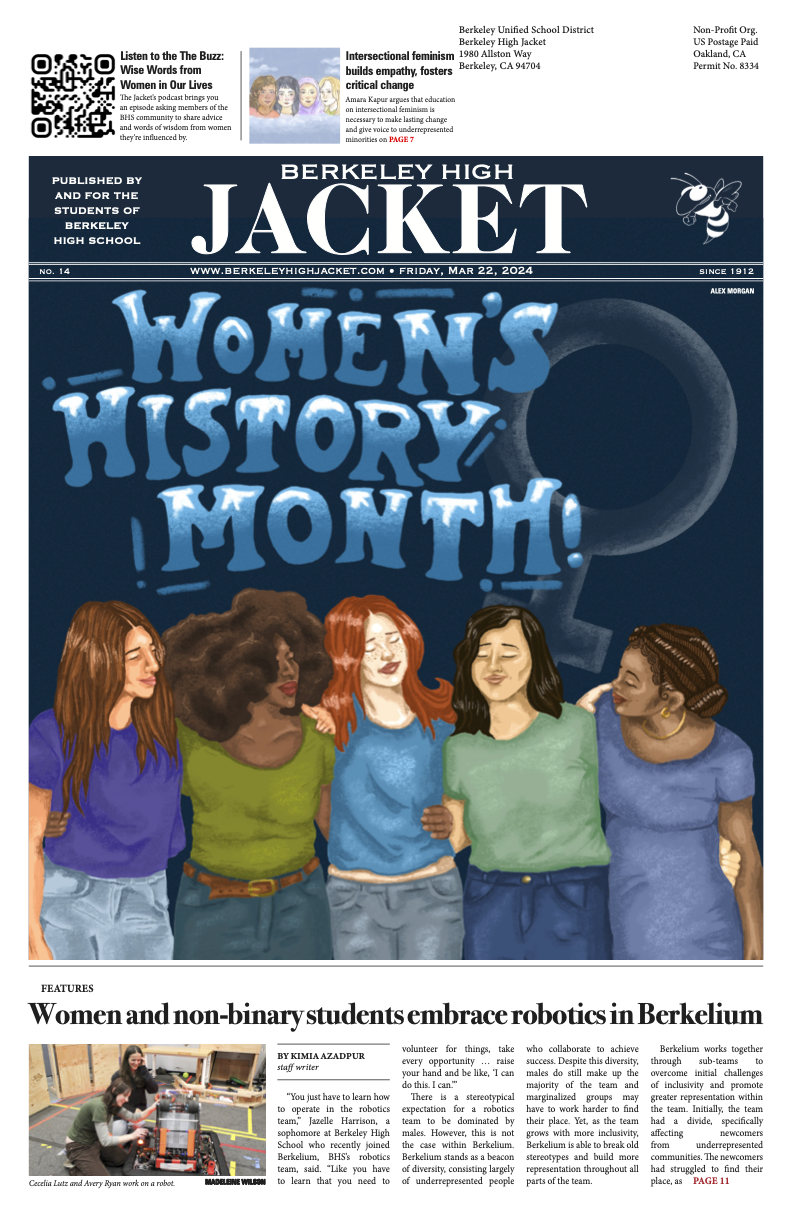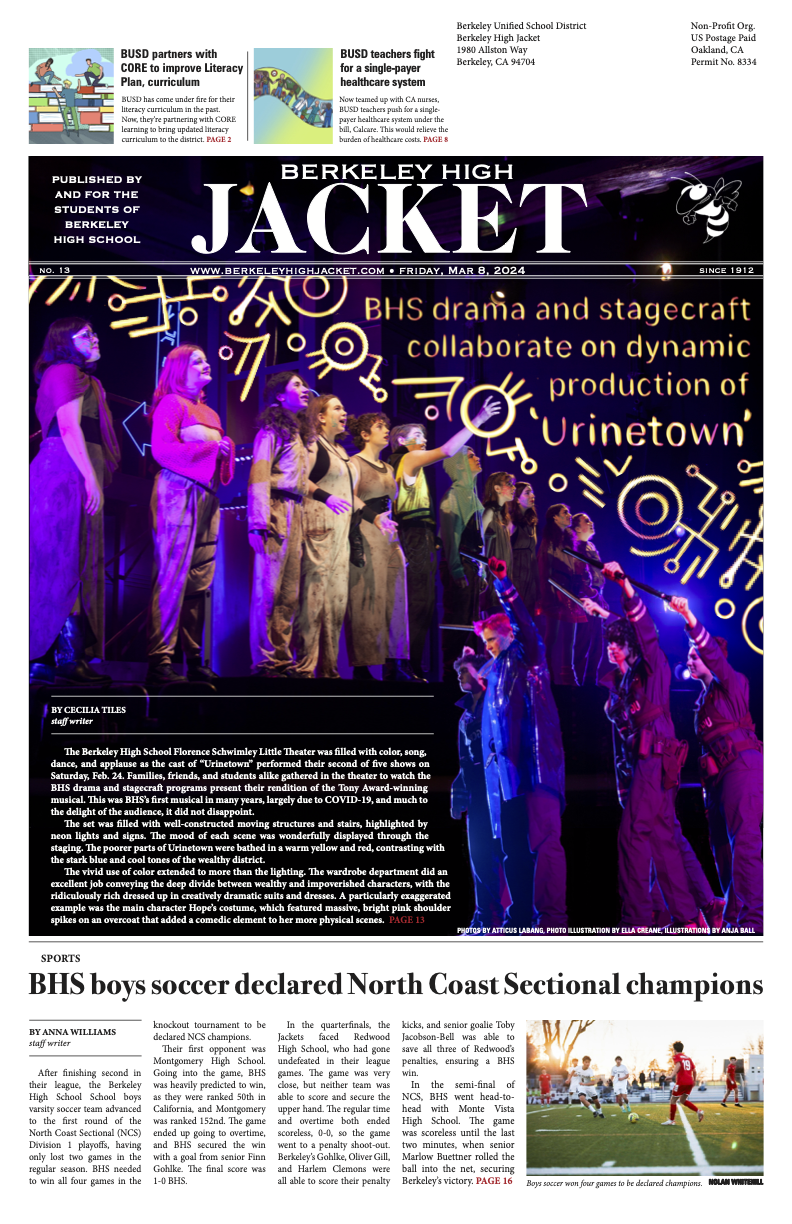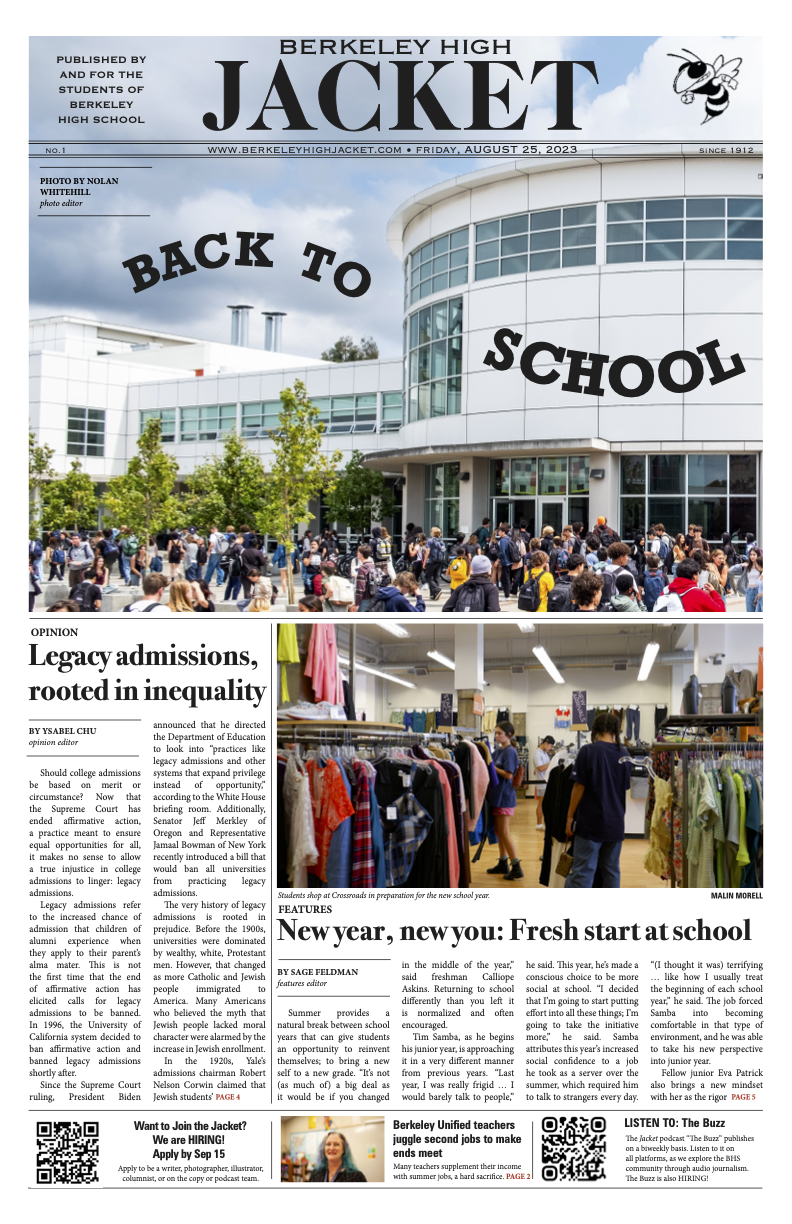“The White Lotus” is a show that centers around class struggle and the dynamics of wealth. Written by Mike White, season one premiered on July 11, 2021. It has received some criticism, but even more than that, a huge fan following who are anticipating each new season. Each season features a new set of characters, except for one or two carrying over from previous seasons. The season then follows these characters on a luxurious resort holiday. These vacations tend to end up more like fever dreams than happy vacations, with the first scene in each season establishing that someone will die at the end and the rest of said season building up to that event in great suspense .
Marly White, a Berkeley High School junior in AC, thinks the plot continues to be intriguing and that another season could be successful, but that the showrunners should not drag it out, “I think they could make one more, but that’s it,” she said. White is concerned that the quality of the show could decline if they choose to continue past a fourth season. She has seen a pattern in other shows of the quality going down over time and considers it to be especially challenging for “The White Lotus,” seeing as the structure is pretty repetitive from season to season.
Freshman Ellah Altman thinks that they should definitely make more seasons, but brings up an interesting point on how each season is essentially made from the same foundation. “There comes a point where if they make too many seasons it’s going to get repetitive because it is the same premise every time,” she said.
Berkeley High School Latin teacher, John Piazza thinks that the class conflicts within “The White Lotus” are most prevalent during the first season with more of a focus cast on the workers at the resorts, “In terms of the class conflicts, I think it really varies from season to season. They kind of hit you over the head with it in the first season, whereas in the second season it is often seen through the lens of sexual power dynamics. In the third season, it takes a backseat to the intense interpersonal drama,” he said.
Altman enjoys the show’s commentary on class, “it’s definitely very interesting to see how (the one percent) are so sheltered,” she said. She thought that the third season especially delved into economic downfall with an interesting take on wealthy families, for instance the Ratliff family, who are facing ruin due to the patriarch’s perpetration of white collar crime. “It was just kind of heartbreaking to see how each one of them proved how they wouldn’t be able to live without that money and how much they take all that stuff for granted,” Altman said.
Joseph Poppas, a psychology teacher at BHS, notes how the show’s complex depiction of characters has the viewer somehow rooting for both their successes and their downfalls. He is particularly interested in the focus on power dynamics. “Most of the time when people think of ‘The White Lotus,’ they think of what in sociology, we call the power elite. But actually, when I think about the show, I always tend to go back to the employees. So when we talk about class dynamic, it’s really interesting to kind of see how the different classes relate to each other, or from the view of the wealthy, how they don’t relate to the people that work or live around them, these resorts are so far fetched, but they actually exist and most of us have never been to them. So you can just imagine the classes at their extremes just kind of meeting,” Poppas said.
Poppas also believes the show gained popularity due to the absurdist nature of its commentary on social hierarchy. “It’s a social satire, but maybe, like, in a global kind of way, and that’s interesting. So I think that’s what most of us watch it for, and ... the clash of social hierarchies has been interesting forever,” Poppas said.
“The White Lotus” takes horrible people, sticks them in a remote and beautiful location, and watches them spiral. The show depicts the relationships of these wealthy families through extreme struggles of honesty, murder, and infidelity. The seasons attempt to explore the intersection between the working class and the one percent. It shows how the extremely rich can interact with those helping them and each other. The show is twisted and makes you never want to go anywhere near a hotel called “The White Lotus.” It provides an interesting reworking of the same premises every season to explore complex power dynamics between the megarich and those whose jobs are to serve them.





